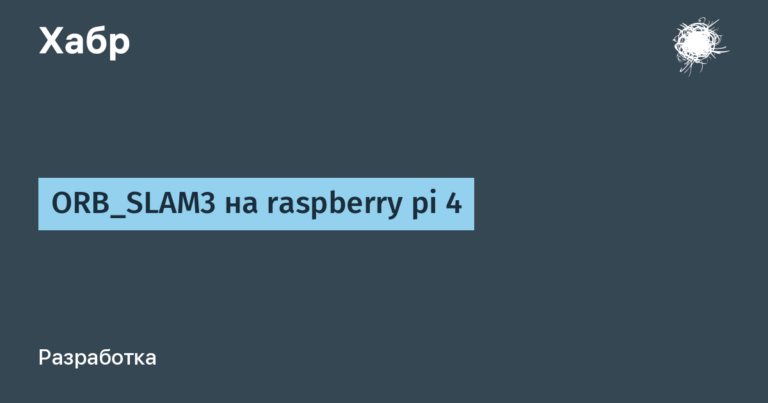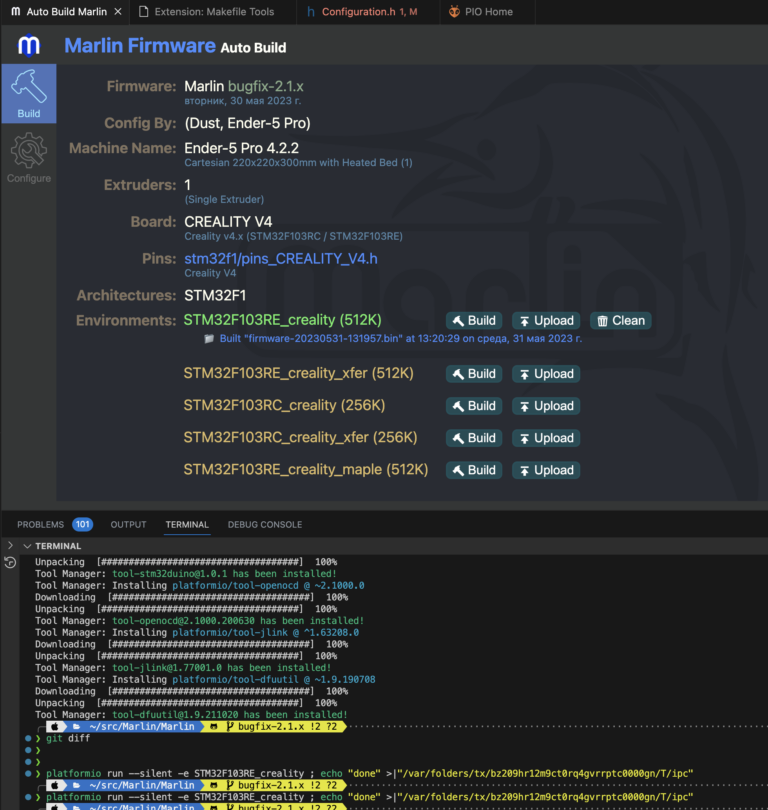Interactive virtual game as a form of education for schoolchildren

Should children be banned from Internet access? Sooner or later, such a question is asked by all modern parents, and it can already be answered clearly – no. For one simple reason, the Internet is everywhere. And it will be much more optimal to use it for teaching a child. Of course, you will have to control and be aware of what content a young, fragile brain is consuming. For example, this fall my daughter will go to first grade. For comparison, I don’t remember being asked, like my daughter, in the first grade, such questions as “Is there a garbage recycling plant in our city?”, “When can a person live on Mars?”, “Have all the bones of dinosaurs been dug out?” … Today’s children are more inquisitive, and this is thanks to the Internet. It is very important to maintain this curiosity when the child starts school. After all, it may seem to a child that in schools it is more boring to talk about something than in “Fixies” or “Gravity Falls”. Teachers and lecturers may seem less charismatic and expressive than, shall we say, pop science bloggers. And at some point, the child will simply conclude that there is more and better knowledge on the Internet, and it is not at all necessary to go to school. This was the case with most of the children in the elementary and middle grades who were forced to study remotely during the pandemic. They refused to go to school when the educational process was resumed. This clearly showed that the educational system needs reforms, that it is necessary to integrate the Internet into the learning process, and even more so, does not oppose and prohibit it. This will not be so easy and not so fast! Time and money are needed, especially specialists are needed to develop databases and electronic resources. During the time when Facebook creates Instagram for children under 13, I suggest that you familiarize yourself with examples of electronic educational resources that can be useful for children of all ages, and as interesting for them as Minecraft, Among Us and YouTube Kids.
Whyville
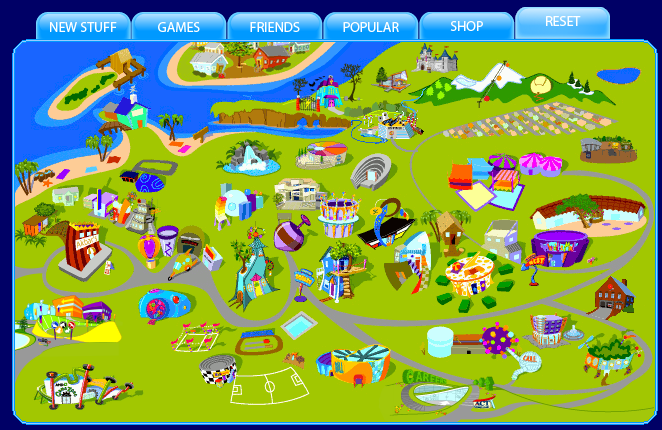
In 1999 it was launched Whyville.net, the first virtual world specifically for kids, with a play-based learning base and one of the earliest virtual currency economies. This is an educational Internet site for children between the ages of 8 and 14, founded and operated by Numedeon, Inc. Whyville engages its users in a wide range of subjects: science, business, art. Whyville users (Whyvillians) participate in virtual world simulation and RPG games sponsored by a wide range of government, non-profit and corporate organizations. In 2009, the website had a registered base of over 7 million users.
Whyville was also one of the first virtual worlds to use an internal virtual currency. Users receive a “starting” salary based on their educational activities on the site. With it, they can buy tools, vehicles, furniture, building materials and other virtual goods and services that improve their lives.
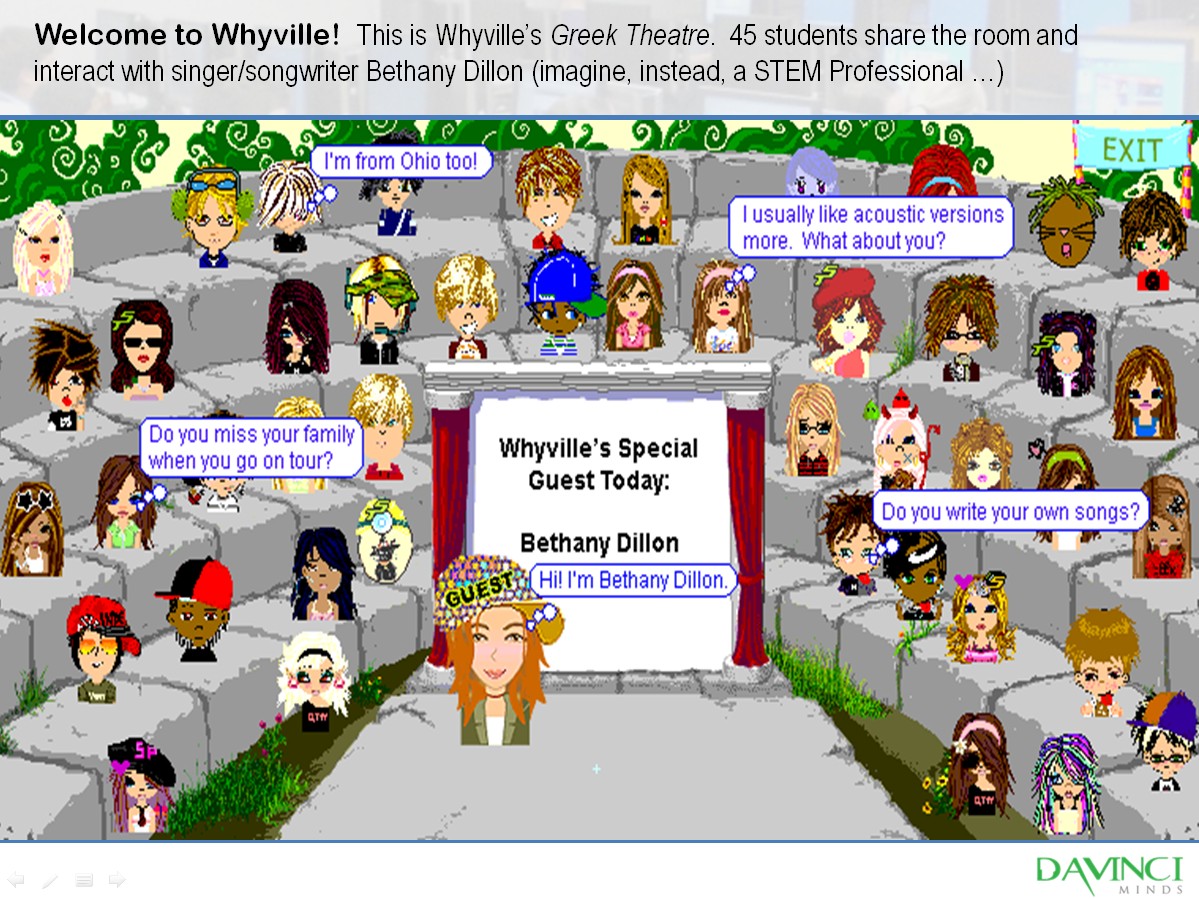
Whyville was created by Dr. James M. Bauer, his students and staff at California Institute of Technology who wondered if virtual games based on simulation could improve education. Working with educators, Whyville has also been involved in developing new playful and practical approaches to educating young children in social, emotional health and well-being.
Whyville is powered by NICE, the interactive community engine for Numedeon. NICE is an online platform that supports the creation and management of immersive virtual worlds. Whyville runs in a standard web browser and can run at a connection speed of as little as 56 Kbaud.
Whyville has participated in many projects involving schools. For example, Whyville has sponsored several human resource development projects aimed at encouraging children to consider technical and scientific careers.
FunBrain

FunBrain Is an educational website with a browser game for children and adults. It was on this site that it was first published “Diary of a Wimp”before it turned into a successful book series and film franchise.

The site was founded in May 1992 and is owned by Poptropica Worldwide; a division of the Family Education Network. The current owner is Jess Brelier. The company said the site has 65,000 registered teachers, 35 million monthly visits and 60,000 daily page visits, and provides math games for kids.

Funbrain is a game without the obligatory interaction with other players, restrictions on conversations and other unfavorable conditions for chatting. The site has passed KidSafe certification. CommonSense Media rates the site as good for 7 year olds based on parent and child feedback.
ABCya!

ABCya! Is a website that features educational games and activities for school children. The games on the website are grouped by grade from kindergarten to sixth, as well as by subject category. ABCya.com was founded in 2004 by Alan Tortolani. A public school teacher, Tortolani has created his own classes for his students. This domain name “ABCya” was chosen by Tortolani to make it accessible to children and easy to type into a web browser.
Cool Math Games
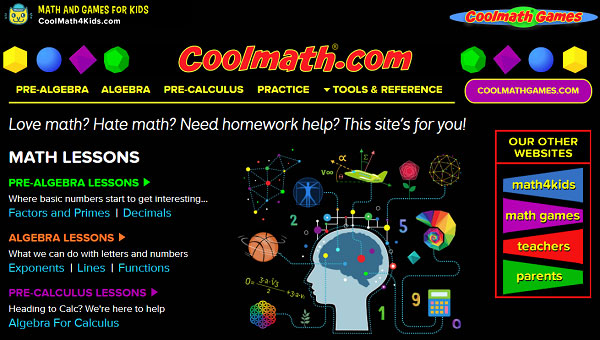
Cool Math Games Is an online portal hosting HTML browser games for children. Cool Math Games first went online in 1997 under the slogan “Where logic and thinking meet fun and games.” In November 2019, Popular Mechanics listed Cool Math Games as one of the “50 Most Important Websites” since the inception of the Internet.
In the summer of 2019, rumors circulated about the closure of Cool Math Games in 2020 due to the end of support for Adobe Flash Player. In light of these rumors, a petition was launched on the Change.org website to stop its closure, which has garnered over 100,000 signatures. Cool Math Games has confirmed that it will not shut down and will focus on releasing new HTML5 games and converting older Flash games to HTML5.
BrainPop

BrainPop Is a group of educational websites with over 1,000 animated short films for students ages 6 to 17, as well as quizzes and related materials in science, social studies, and more. BrainPop is used by more than 25% of US schools and also offers a subscription for families and students at home. It is also used in schools in Mexico, France, Spain, Israel and several other countries, where it offers videos in local languages for students in those countries. BrainPop is available as a subscription, but also contains free content, including a movie of the day, several free movies from each topic area, teacher resources including lesson plans, and an extensive library of educational games called GameUp.
Founded in 1999, the BrainPop website displays curriculum-based animated content that supports educators and is designed to keep students entertained and motivated to watch. The films on the sites cover science, social studies, English, mathematics, engineering and technology, health, arts and music. Since 2007, subtitles have been used in films. The company was founded by Avraham Kadar, MD, immunologist and pediatrician, to explain medical concepts to his little patients through animation. Kadar served as CEO from the inception of the company until 2019. As of 2011, BrainPop received over 11 million unique visits every month from thousands of schools and individuals around the world. BrainPop uses an in-house team of educators, animators and writers to create and continually update sites, including teacher and parent involvement.
Kahoot!
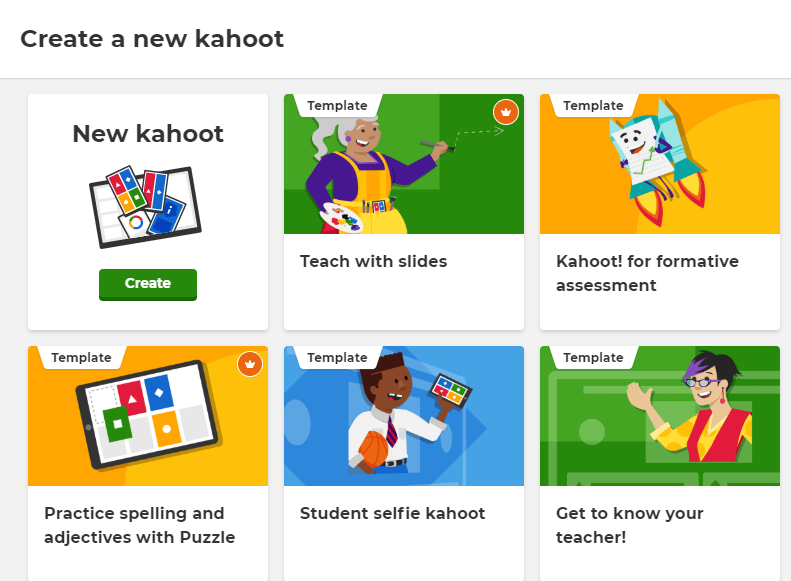
Kahoot! – a game learning platform used in schools and other educational institutions. The Kahoot educational games are quiz games that are accessible through a web browser. Kahoot was developed in 2013 for social learning where students gather around a shared screen such as an interactive whiteboard, projector, or monitor. Kahoot reached a total of one billion participating players in March 2017, and has 50 million monthly active unique users. In September 2017, Kahoot was launched on the mobile platform as an app.
ClassDojo

ClassDojo Is an educational technology company. It connects elementary school teachers, students, and families with communication features such as a feed of school day photos and videos and messaging that can be translated into over 35 languages. It also allows teachers to record student skill feedback and create a portfolio for students so families can keep abreast of school activities beyond meetings with teachers.
According to ClassDojo, its app has been used since 2011 by teachers, children and families in 95% of kindergarten to eighth grade schools in the United States, as well as 180 other countries. ClassDojo is a graduate of the Ed-tech division of Y Combinator and was launched in August 2011 by Sam Chaudhary and Liam Don. Mostly used in England. There is support for the Russian language.
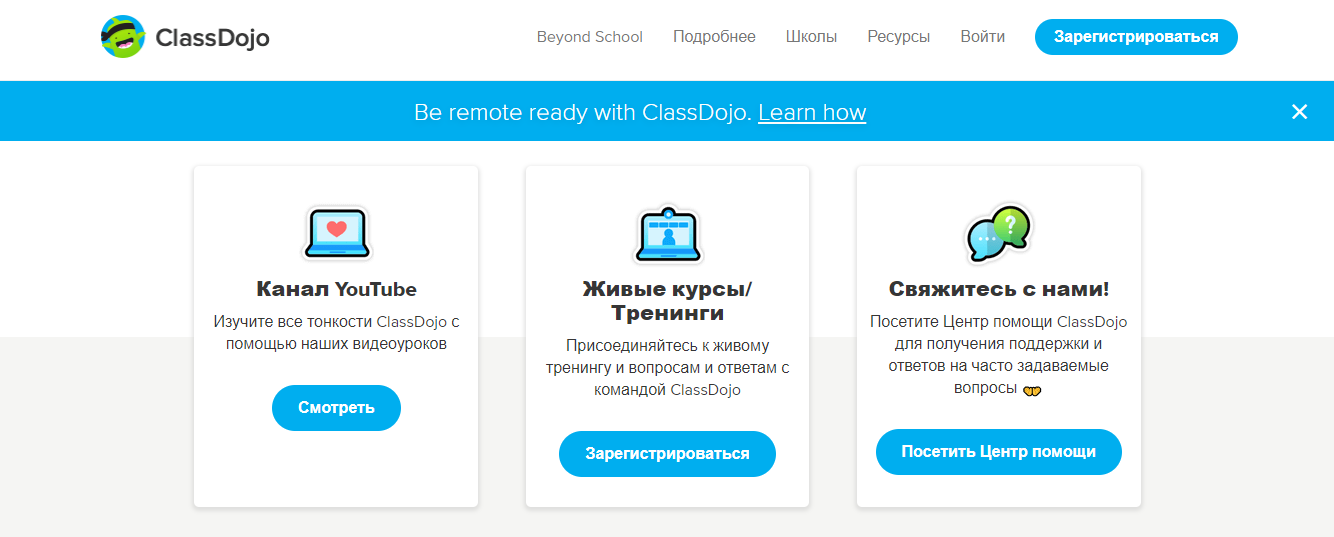
ClassDojo allows students, teachers, and parents to communicate. To use ClassDojo, teachers register for a free account and create “classes” with their students. They can give students feedback on various skills in the classroom. They are customizable and teachers can modify skills to adapt to the needs of the class or school. Teachers can post photos and videos in their classroom story or school story. They can also communicate with parents by receiving “read receipts” to find out when their messages have been read.
Parents can also access ClassDojo when invited by their child’s teacher and receive news of what’s happening at school, view the history of the entire class, and see a timeline of their own child’s classroom events through images and videos. In October 2018, the company launched its first paid product, an add-on family subscription service called ClassDojo Beyond School. This is a homeschooling kit for children that their local school may not be able to offer.
ClassDojo is available as a web app that can be used on any device with a web browser, and as a native app for iPhone and Android. The company makes ClassDojo free for teachers, so no child is disadvantaged, regardless of school.
Using ClassDojo’s features “helped clarify” what’s going on in the classroom for parents, teachers said. In the United States, one in six families with a child in elementary or middle school uses the ClassDojo app daily, and more than nine out of ten preschool and eighth grade schools use ClassDojo in their classrooms. The app’s features have been compared to Snapchat and Instagram without ads, and is also called “Netflix for Education.”

PS Unfortunately or not, these resources are mostly in English (except ClassDojo, where Russian is supported). There are many Russian-language educational online projects, such as Uchi.ru, but there learning is not in the form of a game. There are online projects in the form of games, such as IQshabut there is no interactivity and interaction with other players. The fact that the above resources are in English can be turned into a plus if you try to interest the child in learning a foreign language. This is a small problem with the general availability of, again, online platforms for learning English. But that’s a slightly different story.
Advertising
VDSina proposes servers for educational purposes, as well as for any other tasks. You can create a server with any operating system in a couple of clicks, it is possible to install the OS from your own image, a convenient control panel of our own design and a daily payment for a tariff that you can create yourself.



